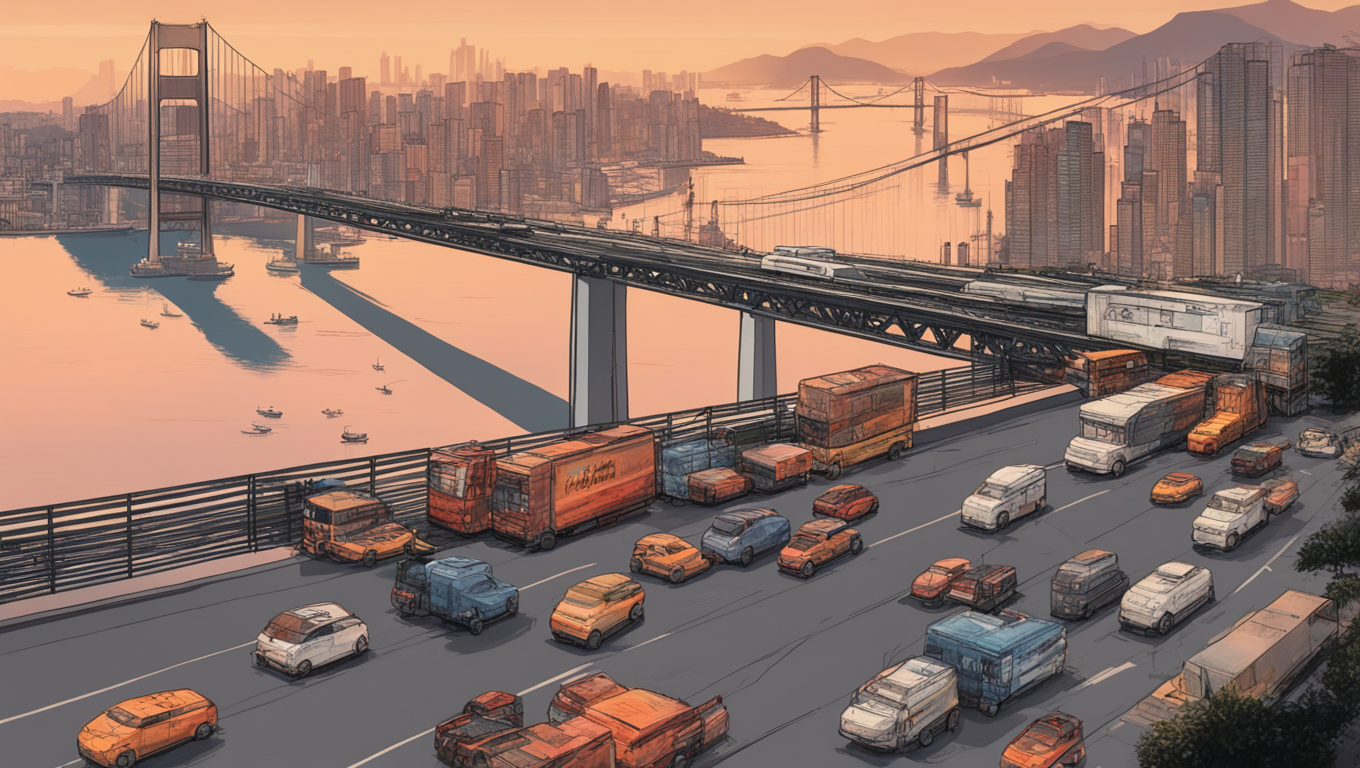In the bustling streets of Seoul, a revolution is underway in the public transportation sector. Late at night, when the city’s residents are settling down, a self-driving bus takes to the roads, seamlessly navigating through the streets, turning corners, and even stopping at traffic lights. It’s a sight to behold, and yet, no one on board seems to notice. This groundbreaking development is the result of years of hard work by Smart YoUr Mobility (SUM), a South Korean company dedicated to revolutionizing transportation.
According to Park Kang-uk, the head of operations at SUM, “One day all the buses in Seoul will be driverless.” This visionary statement highlights the company’s dedication to bringing autonomous vehicles (AVs) to the forefront of public transportation. The self-driving night bus, developed by SUM, is the first of its kind in the world, making Seoul a trailblazer in this rapidly evolving field.
The decision to focus on night buses was a strategic move by SUM. Park explains that “there are fewer and fewer people who want to drive buses, especially at night. This is the perfect solution to help fill that void.” The quiet nighttime roads offer an ideal testing ground for this technology, although it is still a work in progress. Safety measures are in place to ensure a smooth ride for passengers, such as requiring them to be seated and wear seatbelts at all times. Additionally, there is a driver in the seat, ready to take control if necessary. However, Park is confident that as the technology continues to improve, human intervention will become unnecessary.
On a recent journey aboard the self-driving night bus, passengers were initially filled with trepidation as they watched the steering wheel move on its own and witnessed the bus accurately responding to turns. However, that unease quickly dissipated as the journey progressed smoothly. Though there were a couple of occasions where the human driver had to take over, the majority of passengers remained relaxed. One passenger, a student returning home from university, expressed excitement about the driverless bus, stating that it reduces the burden on drivers. Another passenger, unaware that the bus was autonomous, commended its seamless operation.
To categorize AVs, the US-based Society of Automotive Engineers uses a scale from Level 1 to 5, with Level 5 indicating fully automated vehicles capable of operating under any condition. Seoul’s night bus falls under Level 3, where some human intervention is required in specific situations. Currently, the most advanced AVs can be found in China and the United States, with Level 4 taxis being operational in Beijing, California, and Arizona. While some experts doubt the feasibility of fully autonomous vehicles without significant urban infrastructure changes, the advent of AVs in public transport represents a significant step forward.
Governments are particularly interested in autonomous public transport due to the potential cost savings. The majority of a bus route’s expenses are attributed to the driver’s salary. However, concerns have been raised regarding the future of bus drivers in a driverless world. The Seoul City Bus Union, representing the city’s 18,000 bus drivers, raises the issue of human labor replacement and the associated dangers. Secretary-General Yoo Jae-ho proposes that if self-driving technology becomes a reality, it should come with re-education and re-hiring programs for affected workers.
South Korean authorities recognize the potential of autonomous driving and have planned to invest over $1 billion in developing such technology and related infrastructure by 2027. China has also made strides in the self-driving vehicle sector, with ride-hailing company Didi and state-owned electric vehicle manufacturer GAC Aion partnering to produce a fleet of Level 4 robotaxis. Tesla’s Elon Musk has also announced plans to unveil a robotaxi in the coming months. Nevertheless, Professor Graham Currie of Monash University argues that investing solely in private AVs fails to address the broader transport problems faced by cities.
As the journey on the self-driving night bus comes to an end, a former bus driver in his 60s waves goodbye. He reflects on the technology and remarks, “Driving a bus at night is a hard job - I don’t think many people would miss doing this.” It is his perspective that highlights the potential of autonomous vehicles in alleviating the challenges faced by public transportation.
Seoul’s self-driving night bus represents a significant milestone in the development of AVs in public transport. The journey is not without its challenges, but it serves as a testament to the progress made in the field. As technology continues to advance, the vision of a fully automated transportation system moves closer to becoming a reality. The future of public transportation looks increasingly autonomous, promising safer, more efficient, and ultimately, more enjoyable journeys for all.




Use the share button below if you liked it.